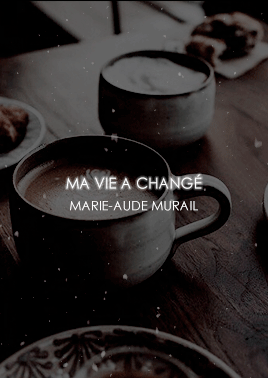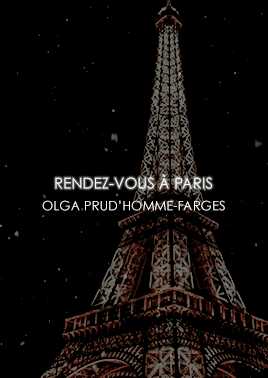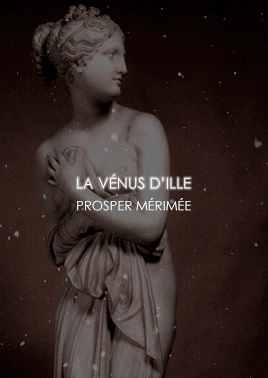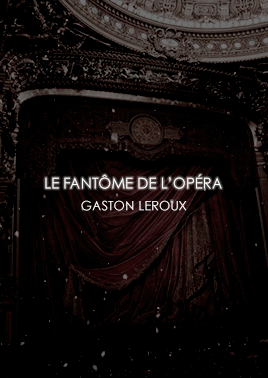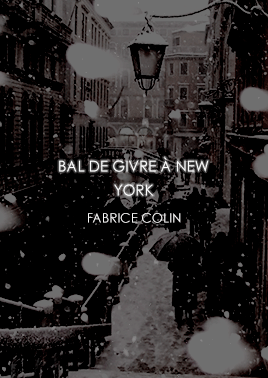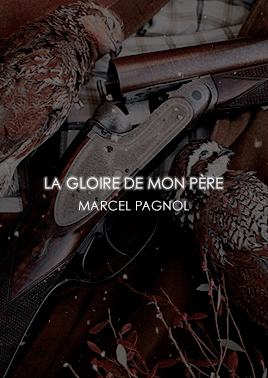Langblr Playlists
langblr playlists
Hello :)
Listening to music in my target language(s) always helped me a lot with pronunciation, vocabulary and use of language, so i’ve decided to share my spotify playlists that each focus on one language!
Some of them are still under construction and don’t have a lot of songs, but they will grow, I promise!
Links:
Arabic Bulgarian Chinese Estonian Finnish French Georgian German Hungarian Italian Japanese Korean Lithuanian Norwegian Polish Portuguese Romanian Russian Serbian Sámi Slovene Spanish Tagalog Thai Turkish Ukrainian
Big playlist with non-English songs only: click here
If the playlist links do not work, this link will lead you to my page!
❗ The Russian and German playlists are now also available on YouTube ❗
Note: These playlists are sorted by language, not by country! You might notice different accents!
More Posts from Edu-fuck-cated and Others
Writer Beware makes posts on which publishing houses to avoid at all costs, which words to look for and which words to watch out for in contracts, and several other things that will keep you in control and knowledgeable about the publishing process. I’d suggest reading through the website if you want to avoid getting ripped off, cheated, or scammed.
A beginner's guide
Bonjour! Is there a list of things that a french beginner should learn, is there a specific order to learn topics in french? Also, love your blog, it helps me a lot.
*
Hello, thanks love you too! Here's roughly how to proceed:
#1. Genders.
Nouns, adjectives, determiners and past participles in French are either masculine or feminine. There is no neutral.
Known: LE/LA/L’ (+ vowel) + singular, LES + plural (The girl)
Unknown: UN/UNE + singular, DES + plural (A cat)
Uncountable: DU/DE LA + singular, DES + plural (Sugar)
How do I know what gender an item is?
Those that end with a consonant are likely masculine (Un éléphant), those that end with an -e likely feminine (Une girafe), especially if it follows a couple of the same consonant (Une tasse). A noun or adjective can be ‘gender-neutral’, or épicène (Juge, Drôle). There are obviously exceptions (Nation, Incendie).
What’s an uncountable item?
It’s a group of items that are either too small or too large to be counted: fruit, sugar, flour, people, etc (ex: Du sable, Des gens).
Let’s practice: Le facteur et la boulangère sont mariés. La ministre est sortie. Un chien aboie dehors. J’ai mangé du pain.
#2. Numbers.
To turn a singular into a plural, adding an -s is your most popular option. It can also be an -x (Bijou, Feu), nothing if the singular ends in -z, -s, -x (Nez); some words only exist as plurals (Ciseaux). There are a few irregulars (Oeil/yeux, Monsieur/messieurs, Madame/mesdames, Animal/animaux).
Let’s practice: J’ai deux petits frères qui sont nés (past participle) en 1998. J’ai un chat sur les genoux. Il y a des noix dans mes gâteaux. Mes yeux sont noirs.
#3. Verbs.
Verbs belong to one of three groups: -er except Aller (90%), -ir with a few exceptions, and the bin (auxiliaries Être and Avoir, Aller, -re, -oir, -ir exceptions). They can be modal (Should) or reflexive: preceded by an object pronoun (Je m’appelle).
The most useful verbs are:
Être: to be, avoir: to have, faire: to do/make, dire: to say, pouvoir: can, aller: to go, voir: to see, savoir: to know, vouloir: want, venir: to come, falloir: to have to, devoir: must, croire: to believe, trouver: to find, donner: to give, prendre: to take, mettre: to put down/place, laisser: to let, to need: avoir besoin de (...)

#4. Tenses.
The most useful tenses are:
Indicative present (J'aime le fromage - I like cheese)
Imperfect (J'aimais le fromage - I liked cheese)
Perfect (J'ai aimé le fromage - I have liked cheese)
Future (J'aimerai le fromage - I will like cheese)
Present conditional (J'aimerais le fromage - I would like cheese)
Present subjunctive (Je veux que tu prennes le fromage - I want you to take the cheese) triggered by certain verbs + que.
N.B.: There are irregular past participles (Être: été, Avoir: eu, Voir: vu, etc.).
Let’s practice: Je ne sais pas. Il dessinait bien. Nous sommes venus. Ils te verront quand ils reviendront. Vous seriez partis tôt.
#5. Function words.
Personal pronouns: Tu manges du pain
Demonstrative pronouns: Celui de ma soeur est mieux
Possessive determiners: C'est ton chien
Contracted words: Elle est au parc
Coordinating conjunctions: J'y vais mais j'ai peur
Subordinating conjunctions: Je demanderai quand il rentrera
Linkers: On se voit plus tard
Let’s practice: Je crois qu’elle sera à l’heure mais je peux me tromper. Pourquoi est-ce que tu pars? Nous reviendrons plus tard, quand il fera plus beau. Vous ne devez pas être en retard sans raison. C’est là, celle à droite.
#6. Basic knowledge.
Accents
Adverbs
Calendar
Colours
Conversation
En + Y
Family
Food
Negations
Numbers
Prepositions
Questions
Relative pronouns
Terminations
Time
Tu or Vous
*
As you're mastering those, start practising.
Listen to music, podcasts, books while looking at the transcription - don't translate, get used to the pronunciation and the word chewing. Record yourself reading.
Then, start reading. I recommend starting with children's literature, especially books you already know in English. Things like Le petit prince or Perrault's fairytales should be accessible.
Use Reverso and Deepl as if you were paid to.
Study the pronunciation posts. The devil is in the details.
Learn vocabulary every week. Avoid translating English word by word, it's often a fool's bet; make a simpler sentence instead.
Explore my grammar tag once in a while.

French fairy tales
Princess Rosette, Marie-Catherine d’Aulnoy : FR / EN
The fair with golden hair, Marie-Catherine d’Aulnoy : FR / EN
The friendly frog, Marie-Catherine d’Aulnoy : FR / EN
Aurore and Aimée, Jeanne de Beaumont : FR / EN
Beauty and the beast, Jeanne de Beaumont : FR / EN
Bluebeard, Charles Perrault : FR / EN
Cinderella, Charles Perrault : FR / EN
Donkey skin, Charles Perrault : FR / EN
Little red riding hood, Charles Perrault : FR / EN
Little thumb, Charles Perrault : FR / EN
Puss in boots, Charles Perrault : FR / EN
Sleeping beauty, Charles Perrault : FR / EN
The fairy, Charles Perrault : FR / EN
Blondine, Sophie Ségur : FR / EN
Ourson, Sophie Ségur : FR / EN
Sophie’s misfortunes, Sophie Ségur : FR / EN
The little grey mouse, Sophie Ségur : FR / EN

(You can download the Wikisource PDFs legally for free at the top of the page as they are part of the public domain)
🌸Human body vocab🌸

le corps - body
le cou - neck
la poitrine - chest
le ventre - belly
la hanche - hip
les organes génitaux - genitals
le tibia - shinbone
la tête - head
le sein - breast
le mamelon - nipple
la taille - waist
le nombril - navel, belly button
l’avant-bras - forearm
l’aine - groin
la cuisse - thigh
le genou - knee
la jambe - leg
le pied - foot
la nuque - nape
l’épaule - shoulder
le bras - arm
le coude - elbow
le poignet - wrist
la main - hand
la cheville - ankle
le talon - heel
le mollet - calf
la fesse - buttock
l’aisselle - armpit
Harry Potter in French, part 1
I’m so going to rewatch each HP movie on Netflix and AIN’T NOBODY GONNA STOP ME
Aaaanyways, in the meantime, here’s a vocab list for all of you Potterheads!! I’ll probs do a part 2 ;)
Poudlard = Hogwarts
Gryffondor = Gryffindor
Serpentard = Slytherin
Serdaigle = Ravenclaw
Poufsouffle = Hufflepuff
La Grande Salle = the Great Hall
Le Choixpeau magique = the Sorting Hat
Pré-au-Lard = Hogsmeade
La Cabane hurlante = the Shrieking Shack
Le Saule cogneur = the Whomping Willow
La Salle sur Demande = the Room of Requirement
La Chambre des Secrets = the Chamber of Secrets
La Défense contre les forces du Mal = Defence against the Dark Arts
Un Moldu = a Muggle
Un Mangemort = a Death Eater
Un Détraqueur = a Dementor
Les Reliques de la Mort = the Deathly Hallows
La Baguette de Sureau = the Elder Wand
La Pierre de Résurrection = the Resurrection Stone
La Cape d'Invisibilité = the Cloak of Invisibility
Le Basilic = the Basilisk
Un Horcruxe = a Horcrux
Le Fourchelang = Parseltongue
10 Things: How to Photograph a Meteor Shower
Taking photographs of a meteor shower can be an exercise in patience as meteors streak across the sky quickly and unannounced, but with these tips – and some good fortune – you might be rewarded with a great photo.
These tips are meant for a DSLR or mirrorless camera, but some point-and-shoot cameras with manual controls could be used as well.
1. The Photo Op: Perseids Meteors
The Perseids are dusty remnants of comet 109P/Swift-Tuttle.
Earth passes through the comet’s invisible, multi-billion mile trail of tiny debris each year around August, creating a meteor shower of so-called “shooting stars” as the particles are vaporized in our atmosphere.
Perseid meteors already are streaking across the sky. This year’s shower peaks on a moonless summer night -from 4 pm on the 12th until 4 am on the 13th Eastern Daylight Time.
Read more on the Perseids ›
2. Get away from city lights and find a place with dark skies.

In this 30 second exposure, a meteor streaks across the sky in Spruce Knob, West Virginia, during the 2016 Perseids meteor shower. Credit: NASA/Bill Ingalls
Too much light and it will be hard for your eyes to see fainter meteors, plus your image will get flooded with the glow of light. Turning down the brightness of the camera’s LCD screen will help keep your eyes adjusted to the dark. The peak of the 2018 Perseid meteor shower occurs just after the new moon, meaning a thin crescent will set long before the best viewing hours, leaving hopeful sky watchers with a moonlight-free sky!
3. Use a tripod.

In this ten-second exposure, a meteor streaks across the sky above Washington, DC during the 2015 Perseids meteor shower, Credit: NASA/Joel Kowsky
Meteor photography requires long exposures, and even the steadiest of hands can’t hold a camera still enough for a clear shot. Heavier tripods help reduce shaking caused by wind and footsteps, but even a lightweight tripod will do. You can always place sandbags against the feet of the tripod to add weight and stability. If you don’t have a tripod, you might be able to prop your camera on or up against something around you, but be sure to secure your camera.
4. Use a wide-angle lens.

In this 30 second exposure taken with a circular fish-eye lens, a meteor streaks across the sky during the 2016 Perseids meteor shower as a photographer wipes moisture from the camera lens Friday, August 12, 2016 in Spruce Knob, West Virginia. Credit: NASA/Bill Ingalls
A wide-angle lens will capture more of the sky and give you a greater chance of capturing a meteor in your shot, while a zoom lens captures a smaller area of the sky. The odds of a meteor streaking past that small patch are lower.
5. Use a shutter release cable or the camera’s built-in timer.

Long exposures are not just for meteors. In this shot taken at Joshua Tree National Park, a hiker’s headlamp leaves a trail of light along a twilight path. Credit: National Park Service / Hannah Schwalbe
A tripod does a great job of reducing most of the shaking your camera experiences, but even the act of pressing the shutter button can blur your extended exposure. Using the self-timer gives you several seconds for any shaking from pressing the shutter button to stop before the shutter is released. A shutter release cable (without a self-timer) eliminates the need to touch the camera at all. And if your camera has wifi capabilities, you might be able to activate the shutter from a mobile device.
6. Manually focus your lens.

In this 30 second exposure, a meteor streaks across the sky during the annual Perseids meteor shower Friday, August 12, 2016 in Spruce Knob, West Virginia. Credit: NASA/Bill Ingalls
At night, autofocus will struggle to find something on which to focus. Setting your focus to infinity will get you close, but chances are you’ll have to take some test images and do some fine tuning. With your camera on a tripod, take a test image lasting a few seconds, then use the camera’s screen to review the image. Zoom in to a star to see how sharp your focus is. If the stars look like fuzzy blobs, make tiny adjustments to the focus and take another test image.
Repeat until you are happy with the result.
If your camera has a zoomable electronic viewfinder or live view option, you might be able to zoom to a star and focus without having to take a test image.
7. Aim your camera.

The Perseids appear to radiate from the constellation Perseus, visible in the northern sky soon after sunset this time of year.
Even though we don’t know when or where a single meteor will appear, we do know the general area from which they’ll originate.
Meteor showers get their name based on the point in the sky from which they appear to radiate. In the case of the Perseids, during their peak, they appear to come from the direction of the constellation Perseus in the northern sky.
8. Calculate your exposure time.

In this 20-second exposure, a meteor lights up the sky over the top of a mountain ridge near Park City, Utah. Even though this image was captured during the annual Perseid meteor shower, this “shooting star” is probably not one of the Perseid meteors, which originate from material left behind by Comet Swift-Tuttle. Instead, it’s likely one of the many bits of rock and dust that randomly fall into the atmosphere on any given night. Credit: NASA/Bill Dunford
As Earth rotates, the stars in the sky appear to move, and if your shutter is open long enough, you might capture some of that movement. If you want to avoid apparent star movement, you can follow the 500 Rule. Take 500 and divide it by the length in millimeters of your lens. The resulting number is the length of time in seconds that you can keep your shutter open before seeing star trails. For example, if you’re using a 20 mm lens, 25 seconds (500 divided by 20) is the longest you can set your exposure time before star trails start to show up in your images.
9. Experiment!

In this 30 second exposure photo, hikers find their way to the top of Spruce Knob in West Virginia to view the annual Perseids meteor shower, Friday, August 12, 2016. Credit: NASA/Bill Ingalls
Once you know the maximum exposure time, you can set your shutter priority to that length and let the camera calculate other settings for your first image. Depending on how the image turns out, you can manually adjust aperture (set it to a lower number if the image is too dark) and ISO (set it to a higher number if the image is too dark) to improve your next images. Changing only one setting at a time will give you a better understanding of how those changes affect your image.
10. Enjoy the show.

The crew of the International Space Station captured this Perseid meteor falling to Earth over China in 2011. Credit: NASA
With your camera settings adjusted, capturing that perfect photo is just a matter of time and luck. The highest rate of meteors visible per hour is in the hours after midnight and before dawn. Set up your camera next to a lounge chair or a blanket to witness the wonder of a meteor shower for yourself – and, with any luck, you’ll take home some envy-inducing shots, too!
Make sure to follow us on Tumblr for your regular dose of space: http://nasa.tumblr.com.
Teen French expressions
For if you want to make hip young friends.
Disclaimer: French people complain a lot. A lot. Don’t be surprised if 90% of these expressions are complaining.
Non mais oh - say this if someone does something mildly annoying and you want to express your shock and distaste.
Tu me fais chier - (alt. tu me fais chier, là.) literally ‘you make me shit’. means you’re pissing me off.
Carrément - translates to ‘squarely’. Means ‘literally’. If someone tells you something surprising or annoying, you can answer simply “ah carrément.” see: tu me fais carrément chier.
J’hallucine / je rêve - are you annoyed by something? say these.
C’est pas possible - a classic. anything bad happens - c’est pas possible. There is no cheese left? It’s not possible. I’m hallucinating. This is a burden on me that solely I can bear I cannot believe this is happening.
Ça commence à me gaver - I’m starting to get real sick of this. see: Ça commence carrément a me gaver là, putain.
T’es relou - verlan slang for ‘lourd’ meaning someone’s heavy, personality-wise. They’re tedious.
Ça me saoûle / ça me gonfle - similar to gaver, means something’s pissing you off, you’re sick of it.
Grave - totally.
C’est clair - totally/that’s clear. Like ‘claro’ in spanish. “Justine elle est trop relou” “C’est clair. Elle me fait chier.”
J’en ai marre - I’m sick of this.
J’en ai ras le bol - I’m sick of this.
J’en ai ras le cul - I’m sick of this (vulgar).
(J’en ai) Rien à battre - I don’t give a damn.
(J’en ai) Rien à foutre - I don’t give a fuck.
C’est bon, là. - That’s enough.
Perso, euh, - “Personally,” generally used at the start of a complaining sentence, to express how personal the matter is to you. Perso, euh, c’est bon là. J’en ai ras le cul.
Rôh là - general expression of distaste. Le longer the rôh, the more annoyed you are. Rôôôôôôôôôôôôôôôôôôôôôôôôôôôôh, c’est quoi ce bordel.
C’est quoi ce bordel ? - translates to “what’s this brothel”, means “what’s this shit?!”
C’est de la merde - It’s shit.
C’est une blague ? - Is this a joke?
Idem - ditto
J’ai la dal - I’m hungry
Ça caille - It’s freezing
Ouf - two meanings 1. phew or 2. verlan for “fou”, meaning crazy (as a noun or adjective). “Kévin, c’est un ouf! Il fait du vélo sans casque!” “Ouais carrément, c’était un truc de ouf!”
Kévin - there’s a running joke that all the young delinquents seem to be called Kévin.
Crever - slang for “to die”. Va crever, connard!
Connard/Connasse - c*nt, but a lot less vulgar in french peoples eyes
And finally,
T’es con. No English translation can express the power behind the words “t’es con”. While it may sort of translate to “you’re a c*nt/idiot”, it expresses something much deeper. You really are a god damn fool.
French vocabulary on time, timing, and speeds

Timing of arrival
être à l'heure = to be on time
être ponctuel = to be punctual
être en avance = to be early
être en retard = to be late
être à la bourre = to be running late (familiar)
être pressé = to be in a hurry
l'heure de pointe = rush hour
Earliness/Lateness
tôt = early
tard = late
de bonne heure = early (lit. at a good hour)
sans tarder = at once (lit. without delay)
dès que possible = as soon as possible
Expressions about speed
démarrer sur les chapeaux de roues = to take off like a shot (lit. to set out on the caps of wheels; familiar)
démarrer en trombe = to set out in a whirlwind
y aller mollo = to take it easy/slow (lit. to go about something slowly; familiar)
Basic conversation
Hellos :
Bonjour (good day), bonsoir (good evening, from 5/6 pm) (formal)
Salut, coucou (childish), hola, hey (informal)
Hello (without pronouncing the h-) (mostly informal)
Yo, wesh (ironical, ‘ghetto’ slang) (very informal)
Allô (on the phone - neutral)
Introduction :
Je suis ravi-e de vous rencontrer (nice to meet you - formal)
Enchanté-e (charmed - formal)
Je m’appelle X (’I’m called X’)
Je suis la fille de Y (I am Y’s daughter)
J’ai vingt-six ans (’I have 26 years’)
Je vis à paris, en france (I live in paris, france)
Je travaille dans la publicité (I work in advertisement)
J’ai les cheveux bruns et les yeux verts (I have brown hair and green eyes)
Je mesure un mètre soixante-dix pour cinquante kilos (I’m 5′7/110 lbs)
J’ai deux frères mais pas de soeur (I have two brothers but no sister)
Questions :
Comment allez-vous/vas-tu ? (how are you?)
Comment vous appelez-vous/t’appelles-tu? (what’s your name?)
Quel âge avez-vous/as-tu ? (how old are you?)
Où vivez-vous/vis-tu? (where do you live?)
Est-ce que tu as un-e copain/copine? (do you have a so? - informal)
Quel-le(s) est/sont ton/ta/tes/votre(s) x préféré-e(s)/favori-te(s)?
Que faites-vous/fais-tu dans la vie? (what do you do for a living?)
Combien mesurez-vous/mesures-tu? (how tall are you?)
Comment va votre/ta famille? (how’s the family?)
Thanks :
Merci (thank you - neutral)
Merci beaucoup (thank you very much - neutral)
C’est très gentil (that’s very nice - neutral)
C’est très généreux de votre/ta part (it’s very generous of you - formal)
Un grand merci pour votre/ton aide (many thanks for your help - neutral)
Vous n’auriez/tu n’aurais pas dû (you shouldn’t have - neutral)
Mille mercis (a thousand thanks - very formal)
Cimer (verlan - very informal)
You’re welcome :
De rien (informal)
Ce n’est rien (formal)
Pas de problème/soucis (informal)
Avec plaisir (formal)
Je t’ / vous en prie (neutral)
Il n’y a pas de quoi (neutral)
Sorrys :
Je suis désolé-e (after a mistake, i’m sorry - neutral)
Pardon (sorry, after a mistake or in a crowd - neutral)
Excusez-moi (in a crowd, neutral)
Veuillez m’excuser (to excuse yourself, very formal)
Je suis (vraiment) navré-e (after a big mistake, very formal)
Je regrette (i wish that didn’t happen/i didn’t - neutral)
Goodbyes :
Au revoir (goodbye - neutral)
À bientôt (see you soon - neutral)
À tout de suite (see you in a bit - neutral)
À demain/mardi (see you tomorrow/on Tuesday - neutral)
À la semaine prochaine (see you next week - neutral)
À tout à l’heure (see you later today - neutral)
Bonne journée/soirée/nuit (good day, evening, night - neutral)
Ravi-e de vous avoir connu-e(s)/rencontré-e(s) (glad we met - formal)

-
 crispy-teeth liked this · 3 weeks ago
crispy-teeth liked this · 3 weeks ago -
 satellites reblogged this · 3 weeks ago
satellites reblogged this · 3 weeks ago -
 mjuuuk liked this · 4 weeks ago
mjuuuk liked this · 4 weeks ago -
 obscureandangelic liked this · 1 month ago
obscureandangelic liked this · 1 month ago -
 kutyozh reblogged this · 2 months ago
kutyozh reblogged this · 2 months ago -
 apolotaku liked this · 2 months ago
apolotaku liked this · 2 months ago -
 aliceslanguagediaries liked this · 2 months ago
aliceslanguagediaries liked this · 2 months ago -
 majoaqh liked this · 3 months ago
majoaqh liked this · 3 months ago -
 echtsalty liked this · 4 months ago
echtsalty liked this · 4 months ago -
 kutyozh reblogged this · 4 months ago
kutyozh reblogged this · 4 months ago -
 verycolourfulflipflops reblogged this · 4 months ago
verycolourfulflipflops reblogged this · 4 months ago -
 kutyozh reblogged this · 4 months ago
kutyozh reblogged this · 4 months ago -
 montied liked this · 4 months ago
montied liked this · 4 months ago -
 arowanaprincess reblogged this · 4 months ago
arowanaprincess reblogged this · 4 months ago -
 lazeecreativeluv liked this · 4 months ago
lazeecreativeluv liked this · 4 months ago -
 kutyozh reblogged this · 5 months ago
kutyozh reblogged this · 5 months ago -
 airshell reblogged this · 5 months ago
airshell reblogged this · 5 months ago -
 kutyozh reblogged this · 5 months ago
kutyozh reblogged this · 5 months ago -
 louhilohi liked this · 5 months ago
louhilohi liked this · 5 months ago -
 eternalphospenes liked this · 5 months ago
eternalphospenes liked this · 5 months ago -
 danishphoner reblogged this · 5 months ago
danishphoner reblogged this · 5 months ago -
 kutyozh reblogged this · 5 months ago
kutyozh reblogged this · 5 months ago -
 dipetschmot liked this · 6 months ago
dipetschmot liked this · 6 months ago -
 aceoflights liked this · 6 months ago
aceoflights liked this · 6 months ago -
 mynamemeanscloud reblogged this · 6 months ago
mynamemeanscloud reblogged this · 6 months ago -
 kutyozh reblogged this · 6 months ago
kutyozh reblogged this · 6 months ago -
 moonandseafoams reblogged this · 6 months ago
moonandseafoams reblogged this · 6 months ago -
 moonandseafoams liked this · 6 months ago
moonandseafoams liked this · 6 months ago -
 verycolourfulflipflops reblogged this · 6 months ago
verycolourfulflipflops reblogged this · 6 months ago -
 fineanywaymp3 reblogged this · 7 months ago
fineanywaymp3 reblogged this · 7 months ago -
 kutyozh reblogged this · 7 months ago
kutyozh reblogged this · 7 months ago -
 kinda-wanna-kiss-your-gf liked this · 7 months ago
kinda-wanna-kiss-your-gf liked this · 7 months ago -
 a-sleepy-aro reblogged this · 7 months ago
a-sleepy-aro reblogged this · 7 months ago -
 a-sleepy-aro liked this · 7 months ago
a-sleepy-aro liked this · 7 months ago -
 lottahearthearthkeeper liked this · 7 months ago
lottahearthearthkeeper liked this · 7 months ago -
 mynamemeanscloud liked this · 7 months ago
mynamemeanscloud liked this · 7 months ago -
 mynamemeanscloud reblogged this · 7 months ago
mynamemeanscloud reblogged this · 7 months ago -
 kutyozh liked this · 7 months ago
kutyozh liked this · 7 months ago -
 boss-ahsoka liked this · 7 months ago
boss-ahsoka liked this · 7 months ago -
 fjoundfjamily liked this · 7 months ago
fjoundfjamily liked this · 7 months ago -
 ashs-nerd-den reblogged this · 7 months ago
ashs-nerd-den reblogged this · 7 months ago -
 ashthenerd liked this · 7 months ago
ashthenerd liked this · 7 months ago -
 a-r-i-l liked this · 7 months ago
a-r-i-l liked this · 7 months ago -
 containslanguage reblogged this · 7 months ago
containslanguage reblogged this · 7 months ago -
 cosmogyros liked this · 7 months ago
cosmogyros liked this · 7 months ago -
 kutyozh reblogged this · 7 months ago
kutyozh reblogged this · 7 months ago -
 ashs-nerd-den reblogged this · 7 months ago
ashs-nerd-den reblogged this · 7 months ago


